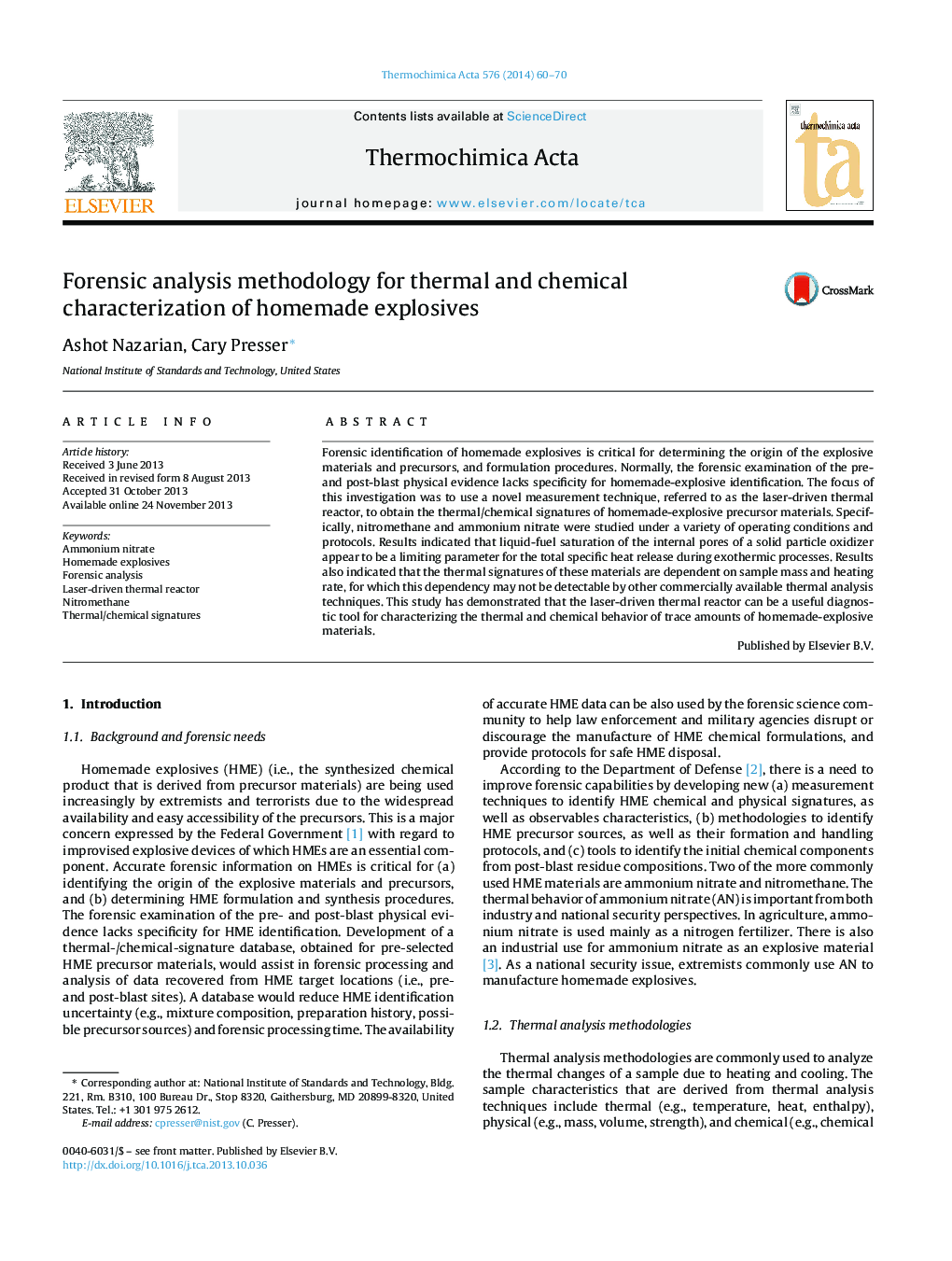| Article ID | Journal | Published Year | Pages | File Type |
|---|---|---|---|---|
| 673552 | Thermochimica Acta | 2014 | 11 Pages |
•Identification of homemade explosives (HME) is critical for determining the origin of explosive precursor materials.•A novel laser-heating technique was used to obtain the thermal/chemical signatures of HME precursor materials.•Liquid-fuel saturation of the pores of a solid porous oxidizer affected the total specific heat release.•Material thermal signatures were dependent on sample mass and heating rate.•This laser-heating technique can be a useful diagnostic tool for characterizing the thermochemical behavior of HMEs.
Forensic identification of homemade explosives is critical for determining the origin of the explosive materials and precursors, and formulation procedures. Normally, the forensic examination of the pre- and post-blast physical evidence lacks specificity for homemade-explosive identification. The focus of this investigation was to use a novel measurement technique, referred to as the laser-driven thermal reactor, to obtain the thermal/chemical signatures of homemade-explosive precursor materials. Specifically, nitromethane and ammonium nitrate were studied under a variety of operating conditions and protocols. Results indicated that liquid-fuel saturation of the internal pores of a solid particle oxidizer appear to be a limiting parameter for the total specific heat release during exothermic processes. Results also indicated that the thermal signatures of these materials are dependent on sample mass and heating rate, for which this dependency may not be detectable by other commercially available thermal analysis techniques. This study has demonstrated that the laser-driven thermal reactor can be a useful diagnostic tool for characterizing the thermal and chemical behavior of trace amounts of homemade-explosive materials.
